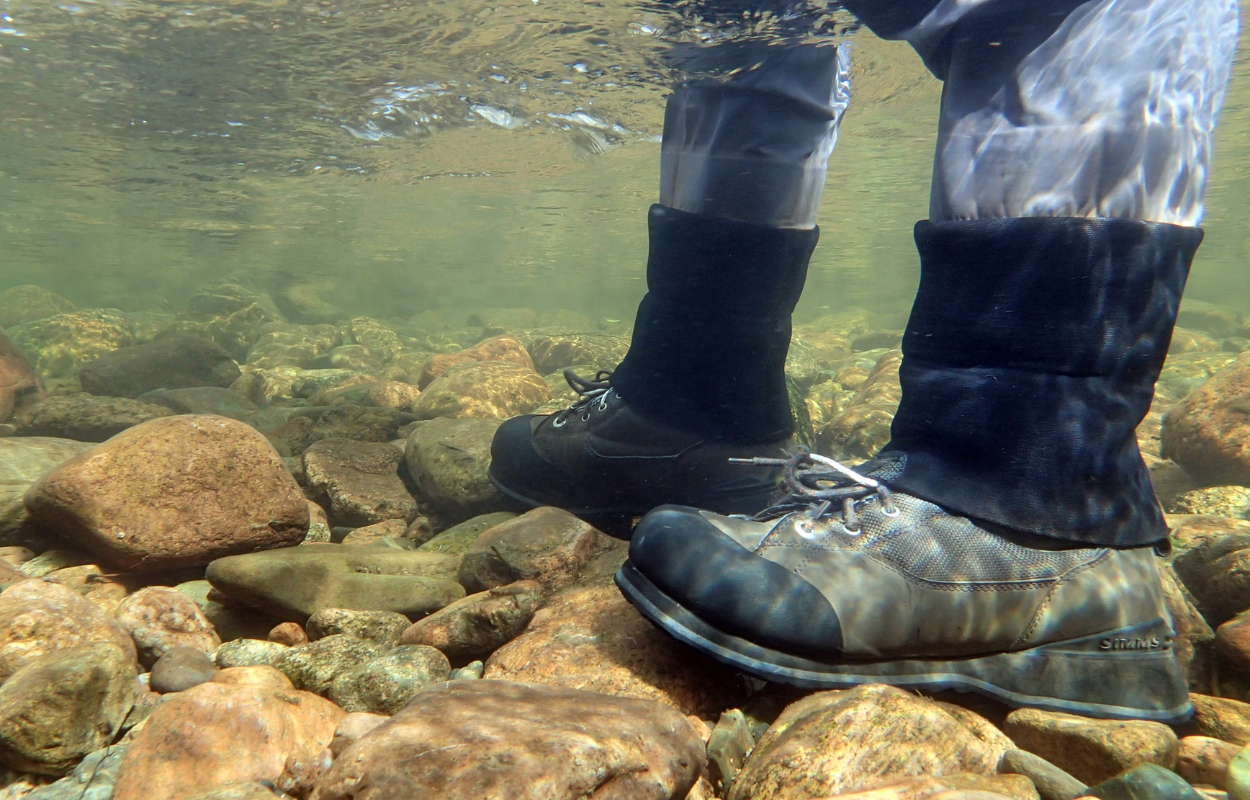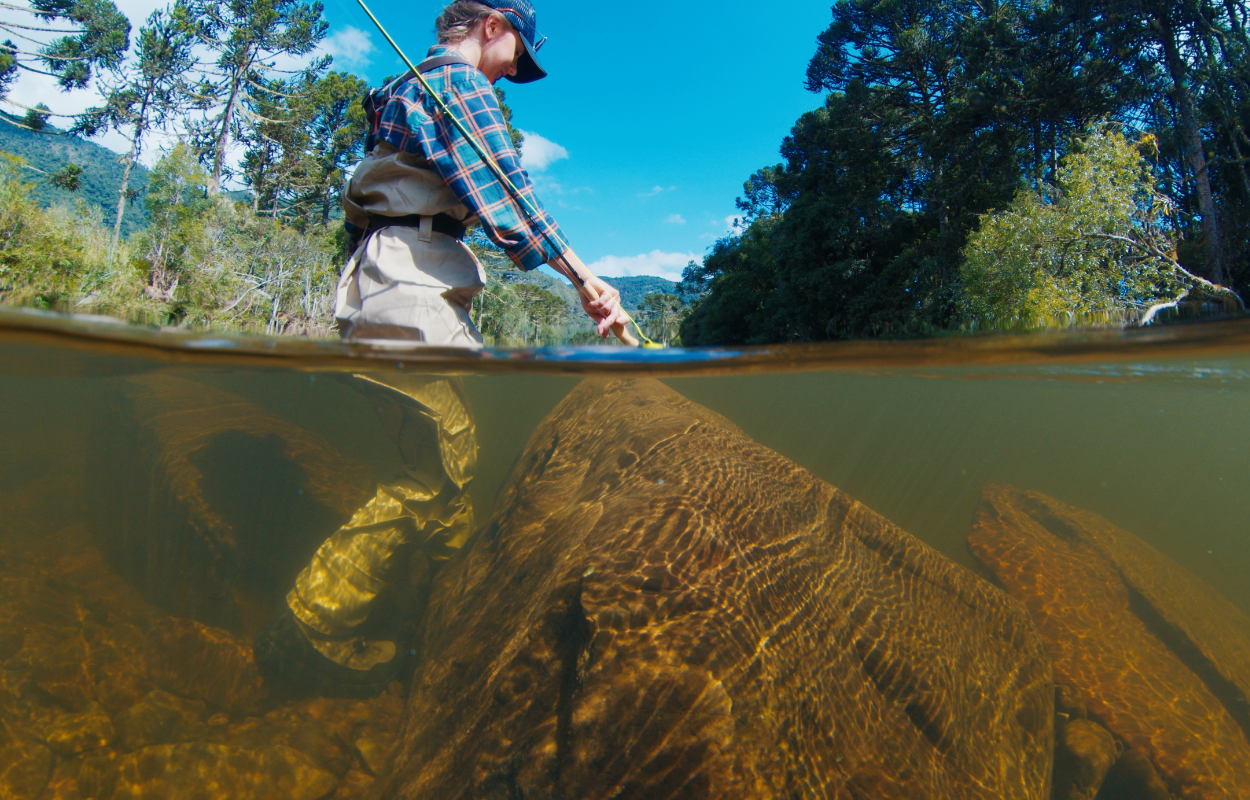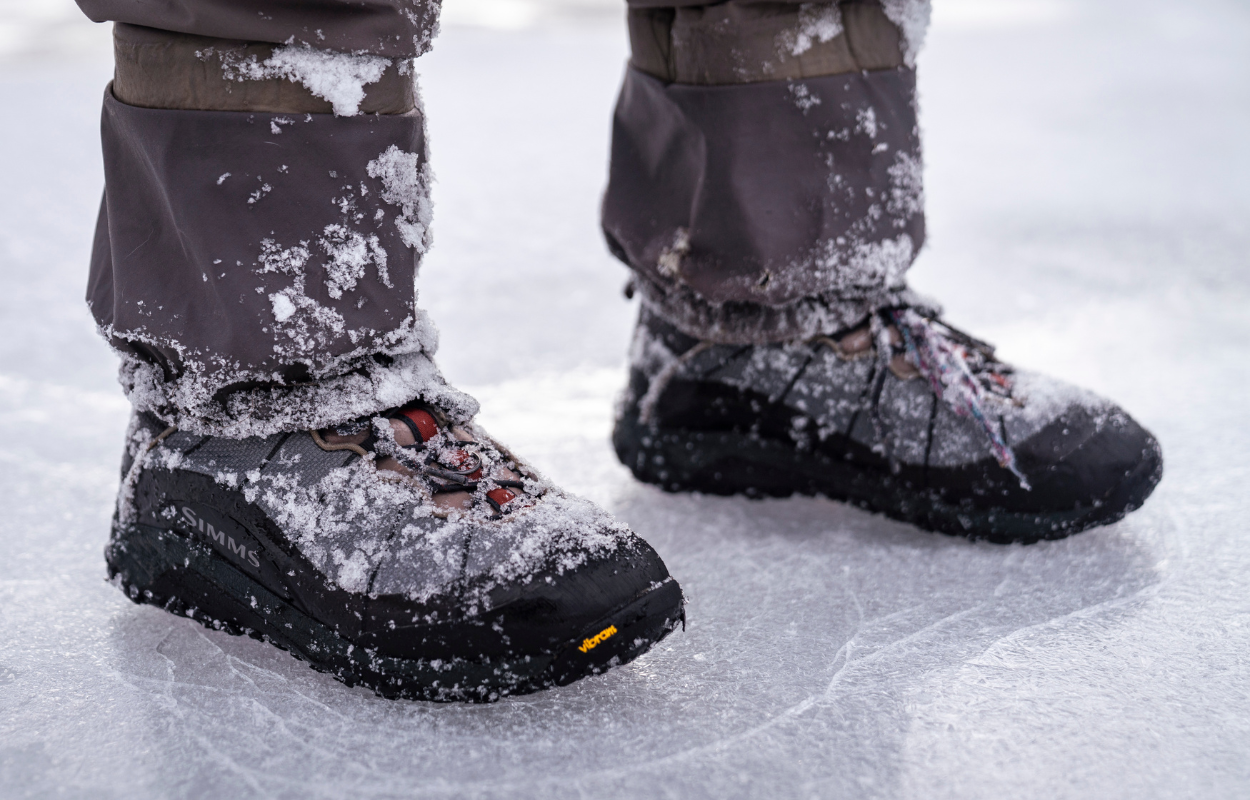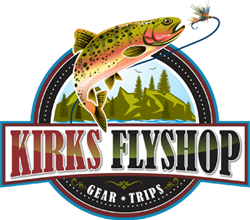Those that take up Colorado fly fishing know what a challenge it can be to find the right pair of footwear, whether it’s felt or rubber wading boots. Over the years, the technology has improved, and felt and rubber wading boots have transformed. Aside from style, anglers have the most difficult time deciding whether to go for the rugged rubber sole or stick to the more traditional felt sole boot. It may be a tough decision but hopefully, we can help shed some light on the subject. Read more to learn about the benefits of rubber vs. felt wading boots.

Felt Sole Wading Boots
The more traditional choice for anglers has always been the felt sole wading boot. Felt wading boots are a great choice for anglers that spend their time in sandy or gravelly rivers and lakes due to their ability to grip on slippery and/or slimy rocks. Beyond their ability to grip to rocks in the water, they are great for places with mossy rocks and logs, as well. While felt sole boots are best in the water and in wet environments, they don’t perform well in those situations where an angler hikes long distances or has to walk on dry, grassy banks.
For extra-grip, add wading studs to the bottom of the felt boot soles. We like to think of this as our 4-wheel drive!
Unfortunately, felt sole wading boots are banned in certain places and regulations regarding wading soles will become more common in the future. Here are some places that ban felt wading boots:
- Alaska
- Maryland
- Missouri
- Rhode Island
- Nebraska
- South Dakota
- Yellowstone National Park
The reason why felt is banned in these places is because felt soles have the possibility of picking up parasites, invasive species, bacteria, and organisms that can be transferred to different bodies of water. While there is no ban in Colorado yet, it is not unlikely that it will happen at some point as invasive species prevention increases.

Rubber Sole Wading Boots
As an alternative to felt sole wading boots, rubber sole wading boots have become more popular across the world due to their tendency to work well in all types of conditions. From hiking long distances to wading miles of river bottom, rubber sole wading boots are becoming the more popular wading boot option because of their versatility. Some benefits include better traction on dry ground or on the bank, quick-drying, better in the snow, and more sustainable (less likely to transplant invasive species)!
As a result of more anglers switching over to rubber wading boots, technology has improved and the materials used have superior gripping ability, almost comparable to felt soled boots. And with companies like Simms pushing the envelope and improving their products, contemporary wading boots are getting better and better.

How to Clean Wading Boots
For those days when you might fish two different rivers, or maybe your wading boots are still wet from fishing a few days ago. It is paramount to make sure that your boots do not carry invasive species between waterways. The most tried and true method that we have found is the following:
- Give your boots a good scrub with a brush and remove any organic material or mud.
- Soak your wading boots in a bucket with 5-10% solution of water and household detergent. It’s best to use a biodegradable detergent that won’t ruin your boots.
- Let the boots soak for at least 10-15 minutes before removing them.
- Rinse your boots with clean, fresh water.
- Air-dry for 48 hours or until boots are completely dry.
Hopefully, this helps you with your decision to purchase felt or rubber wading boots! And if you have further questions, you are always free to contact our Estes Park fly shop, our staff of expert Colorado fly fishing guides is happy to help. Want to try felt vs. rubber boots for yourself? Book an Estes Park fly fishing trip or a Colorado River fly fishing trip, we provide a waders and boots on all of our guided trips.

